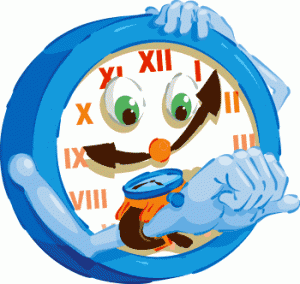Daylight savings time 2011 begins
Tonight is the start of Daylight savings time 2011 and this will be officially starting at 2:00 am this March 13, 2011. Most of the residents in the United States must set their clocks one hour ahead to 3:00 AM with the exception of Hawaii and Arizona.
Most of the countries in Europe observe Daylight saving time but the following countries like Puerto Rico, Hawaii, Guam, US Virgin Islands and American Samoa don’t participate or observe daylight savings time.
In the year 1895 – the daylight saving time (DST) was originally proposed b George Vernon Hudson in order to save energy. The Daylight saving time’s goal is to line the work-day up with the day light.
In order to remember the Daylight saving time, some people used the term ‘fall backwards’ and ‘spring ahead’. In the fall we get an extra hour of sleep while during the spring we lose an hour.
The fall back will be on November 13th 2011 meaning we will get back to standard time adding one hour sleep. If your using an atomic clocks you shouldn’t be minding if the time change in spring and in fall.
Daylight savings time 2011 begins this Sunday March 13, 2011 at 2:00 am. Residents of the U.S., with the exception of Arizona and Hawaii, will set their clocks one hour ahead to 3:00 am.
Some people use the saying ‘spring ahead’ and ‘fall backwards’ to remember which way to turn their clocks. In the fall we will be setting the clocks back to standard time. During the spring we lose an hour of sleep and during the fall we get an extra hour.
Although the idea goes way back, modern daylight savings time (DST) was first proposed in 1895 by George Vernon Hudson. The goal was to line the work-day up with the day light. We burned fewer candles, but DST has been criticized because it causes problems for farming and evening activities.
The official web resource for time in the United States is provided by www.time.gov. Atomic clocks also provide an accurate recourse for home use. These clocks pick up a radio frequency broadcast from the Global Positioning System, interval signals and other sources.
Besides atomic clocks there are atomic watches and weather stations. They all use radio signals to provide accurate time.
The GPS network is a set of satellites in space. The satellites carry very accurate atomic clocks and broadcast the signal to receivers. Like a GPS receiver in your car. The receivers will interpolate your location from the data received from the satellites. Accurate time is of utmost importance for the Global Positioning System (GPS).
The Energy Policy Act of 2005 has extended ‘the Daylight savings time’ period. Initially – the new law wanted to extend the time a whole two months, but was extended only three weeks earlier in the Spring, and one week more in the Fall. The reason for this was farmers and airlines said it would cause too many problems in their industries.
Other countries might not observe, or have a different Daylight Savings Time schedule which can make it difficult to schedule flights. The farmers say that the livestock is affected by the shifting times.
Who originally thought up this idea of Daylight Savings? It turns out that it goes way back to Benjamin Franklin. He thought that setting the clocks for a person’s work day would help to extend daylight hours. This makes sense because there wasn’t any electricity back then. However, it wasn’t until London builder, William Willett promoted a pamphlet in 1907 suggesting adjusting the clocks in the spring and in the fall and its benefits.
If you really despise going around setting your clocks twice a year, you can buy an atomic clock that will automatically sync up to the correct time. The clock receives a radio signal telling the clock what time it is and it will correct for daylight savings time for you.
